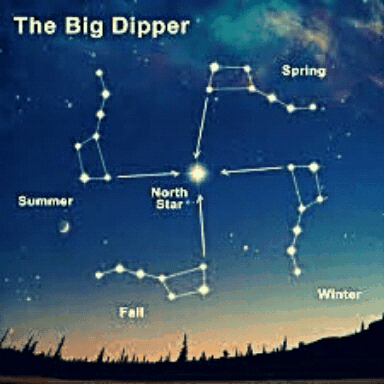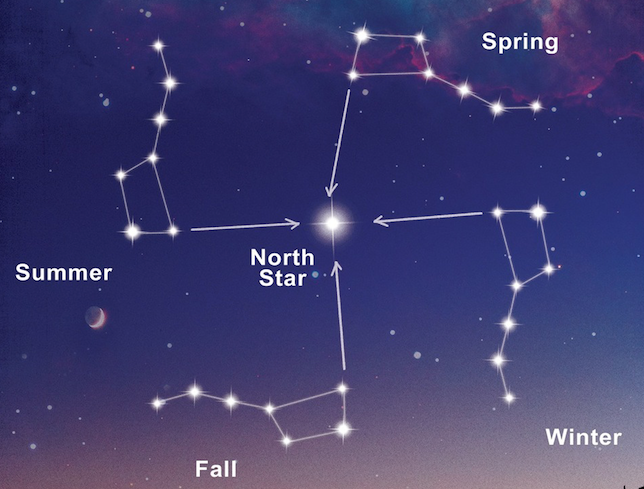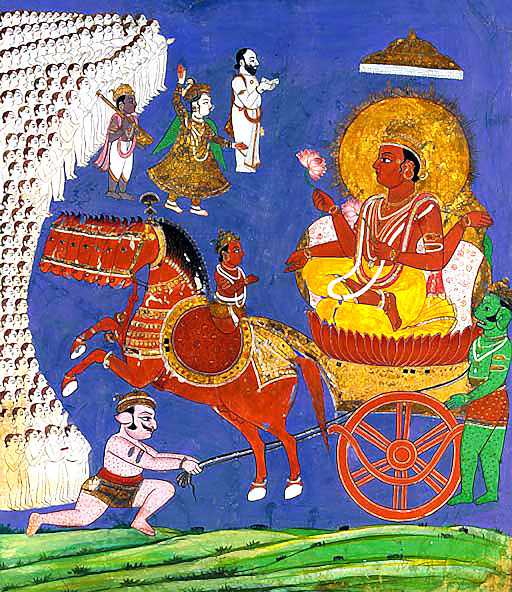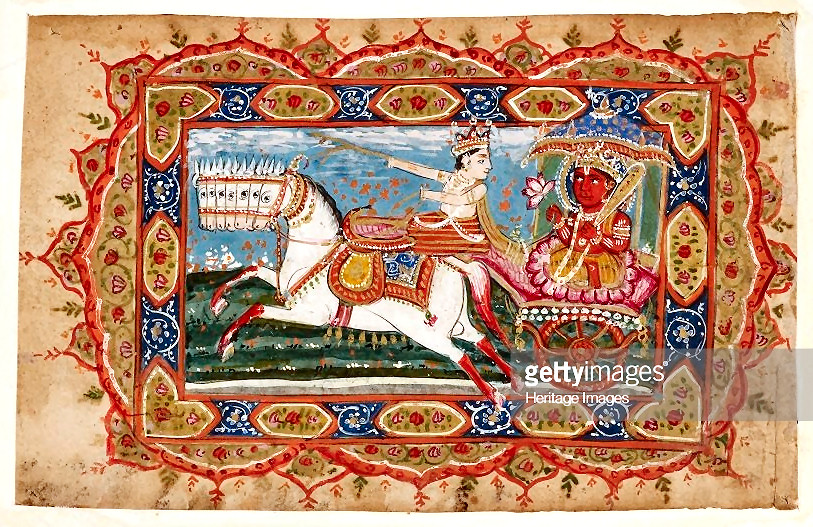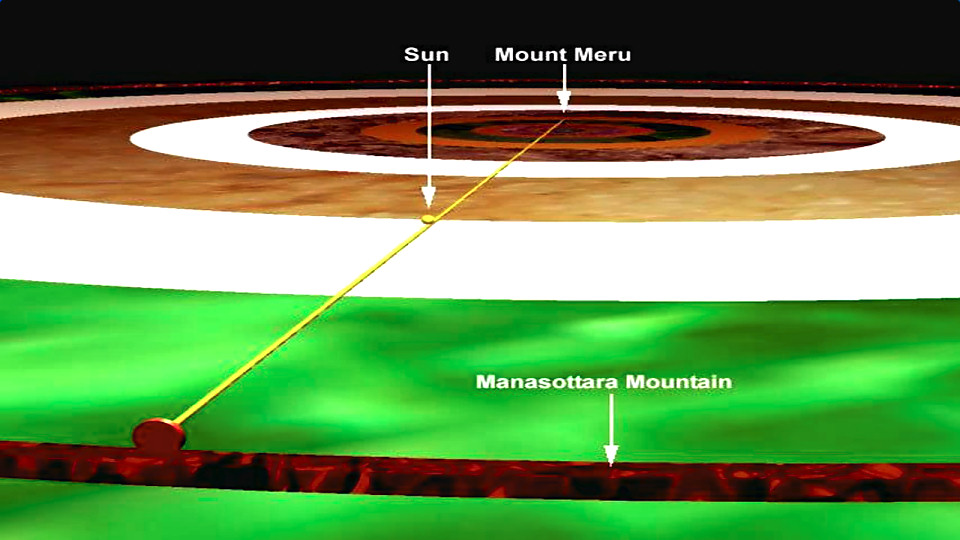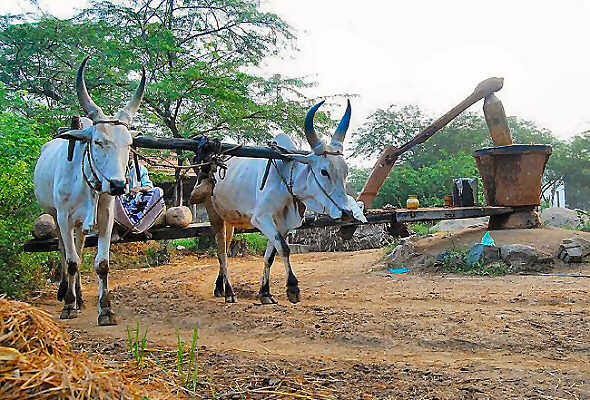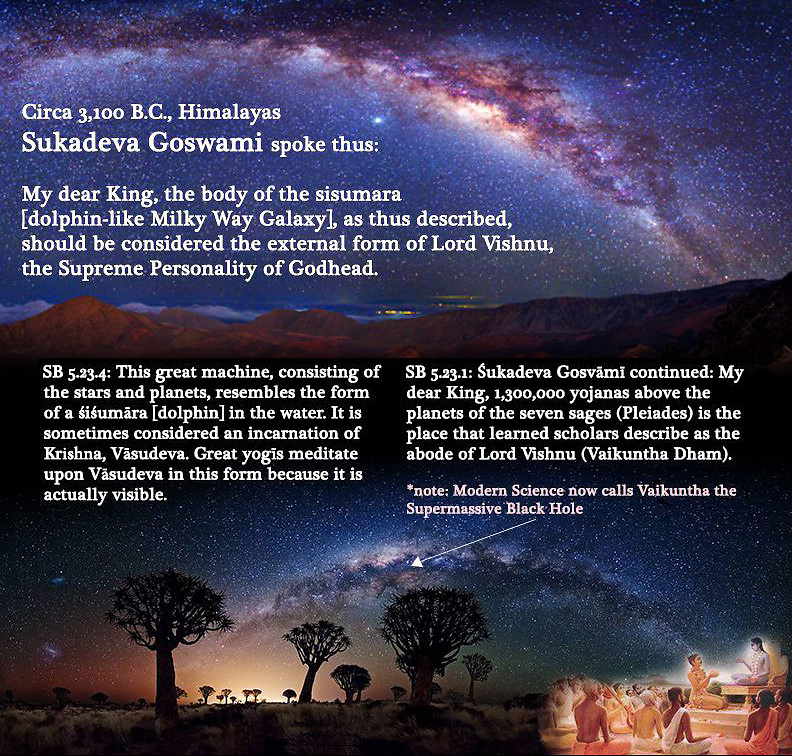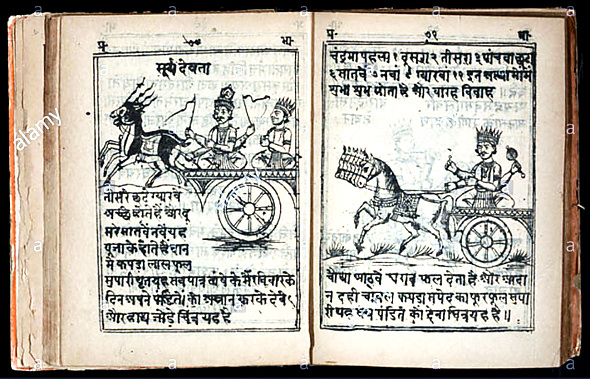
Famous map of the stationary earth from 1893 published by Orlando Ferguson
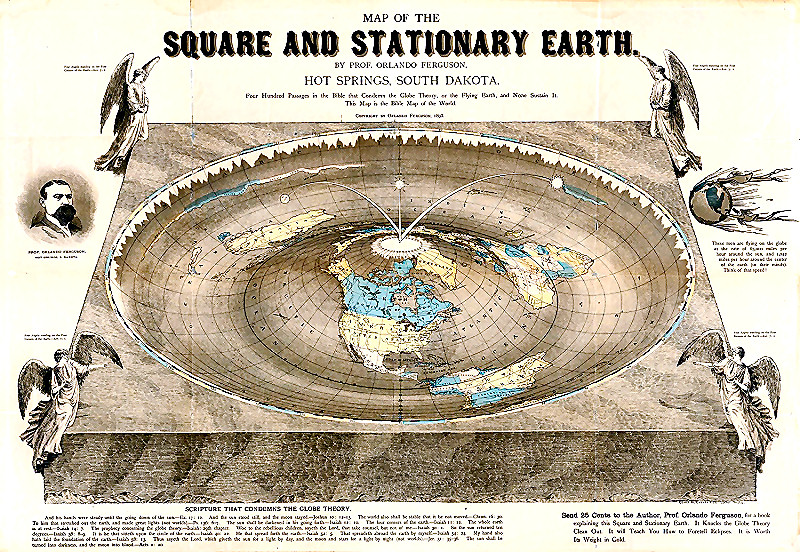
Orlando Ferguson Citing Four Hundred Passages in the Bible
That Condemn
the Globe Theory or the spinning Earth Space Ball.
THE STATIONARY EARTH
and luminaries above
Description from Śrīmad-Bhāgavatam
There are many things we do know as facts from Śrīmad-Bhāgavatam. As far as the earth is concerned the Śrīmad-Bhāgavatam does not describe it as a ball spinning in space. The earth (Bhu-mandala) is described as a huge circular plane with seven cosmic-sized islands and oceans (Varshas) expanding across it's horizontal surface! This great earth circle is held by Ananta-sesha, who bears the earth on his head.
We can say that for an absolute fact. It is certainly not spinning or moving in any way. Because all the movements we see in the sky are explained in the Bhāgavatam as movements of the wheel of time [sisumara chakra, which has all stars fixed on it in the constellations and that whole thing is rotating in the sky] and the sun, moon and planets move with the sisumara chakra but have their own independent movements also.
The wheel of time, a gigantic wheel consisting of all the stars, constellations, etc, all fixed in their respective places is connected to the wheel of the chariot of the sun god. It has an axle that rotates once every twenty-four hours. That causes the whole wheel of time to rotate 360 degrees in 24 hours. And this is the rotation that scientists mistakenly presume is the earth rotating. That is what makes the sun and moon and stars rise and set every day.
The axle of the sun god’s chariot is resting on the top of Manasottara mountain, which is a huge ring of mountains circling the whole Bhu-mandala island complex. In 360 days the axle of the sun god’s chariot moves all the way around the 360 degrees of the Manasottara mountains. This movement accounts for the different rising and setting positions of the sun, moon and stars, and also accounts for the seasons. So these two movements of the wheel of time, sisumara-chakra, prove that the earth is stationary and everything else is moving around the earth. So that accounts for all the movements we see in the sky that the scientists presume are caused by the earth rotating.
Śiśumāra Chakra - wheel of time
The Movements of the Sun
The sun is not stationary; it is also moving like the other planets. The sun’s movements determine the duration of night and day. When the sun travels north of the equator, it moves slowly during the day and very quickly at night, thus increasing the duration of the daytime and decreasing the duration of night. Similarly, when the sun travels south of the equator, the exact opposite is true—the duration of the day decreases, and the duration of night increases. When the sun enters Karkaṭa-rāśi (Cancer) and then travels to Siṁha-rāśi (Leo) and so on through Dhanuḥ-rāśi (Sagittarius), its course is called Dakṣiṇāyana, the southern way, and when the sun enters Makara-rāśi (Capricorn) and thereafter travels through Kumbharāśi (Aquarius) and so on through Mithuna-rāśi (Gemini), its course is called Uttarāyaṇa, the northern way. When the sun is in Meṣa-rāśi (Aries) and Tulā-rāśi (Libra), the duration of day and night are equal. (SB/5/21/21_summary)
The learned say that the sun travels over all sides of Manasottara Mountain in a circle whose length is 95,100,000 yojanas. On Mānasottara Mountain are the abodes of four demigods. East of SumeruMountain is Devadhānī, where King Indra lives, and south of Sumeru is Saṁyamanī, the abode of Yamarāja, the superintendent of death. Similarly, west of Sumeru is Nimlocanī, the abode of Varuṇa, the demigod who controls the water, and north of Sumeru is Vibhāvarī, where the demigod of the moon lives. Sunrise, noon, sunset and midnight occur in all these places because of the movements of the sun. Diametrically opposite the place where the sunrise takes places and the sun is seen by human eyes, the sun will be setting and passing away from human vision. Similarly, the people residing diametrically opposite the point where it is midday will be experiencing midnight. The sun rises and sets with all the other planets, headed by the moon and other luminaries. (SB/5/21/7)
The living entities residing on Sumeru Mountain are always very warm, as at midday, because for them the sun is always overhead. Although the sun moves counterclockwise, facing the constellations, with Sumeru Mountain on its left, it also moves clockwise and appears to have the mountain on its right because it is influenced by the daksinavarta wind.
The entire kāla-cakra, or wheel of time, is established on the wheel of the sun-god’s chariot. This wheel is known as Saṁvatsara. The seven horses pulling the chariot of the sun are known as Gāyatrī, Bṛhatī, Uṣṇik, Jagatī, Triṣṭup, Anuṣṭup and Paṅkti. They are harnessed by a demigod known as Aruṇadeva to a yoke 900,000 yojanas wide. Thus the chariot carries Ādityadeva, the sun-god. Always staying in front of the sun-god and offering their prayers are sixty thousand sages known as Vālikhilyas. There are fourteen Gandharvas, Apsarās and other demigods, who are divided into seven parties and who perform ritualistic activities every month to worship the Supersoul through the sun-god according to different names. Thus the sun-god travels through the universe for a distance of 95,100,000 yojanas (760,800,000 miles) at a speed of 16,004 miles at every moment. (SB/5/21/21_summary)
Although Aruṇadeva sits in front seat of the sun-god and is engaged in driving the chariot and controlling the horses, he looks backward toward the sun-god. (SB/5/21/16)
From the Mahabharata: Aruna-deva is the god of red-morning.
The Sun God And His Driver: Vivasvan is the sun god who regularly governs the movements of the sun. He is the representative of Narayana, thus known as Surya-Narayana. He sits on a chariot of seven horses which has one wheel. When it moves, it is followed by millions of gandharvas and kinnaras who constantly sing the hymns dedicated to Vivasvan. Sixty thousand sages known as Vālikhilyas who are as small as the human thumb steadily offer surya-namaskaras in front of the divine chariot. In such gargantuan procession Vivasvan moves further with great pride.
The meaning of Aruna: Aruna is the driver of the chariot of the Sun. The meaning of Aruna is ‘one whose hue is reddish brown, red, ruddy, crimson or maroon.’
Driver is First: In the vehicle the driver sits in front of the passenger. Thus, when the sun rises the driver is witnessed first by the viewers. The Aruna ascents before the sun rises. Hence, the sky turns red at dawn before the appearance of the sun.
Prayer to Aruṇa-deva:
अरुणदेवं तं प्रभापति सर्वलोहितकारणम् ।
तत्तेजो मण्डलाकारं त्विषा तत्र मनोहरम् ॥
स्थुलसूर्यरथमारूढं प्रभात तत्कर्मणा सदाफलम् ।
रागरक्त सर्व भूतानां त्वं दीप्तिदेवं प्रणमाम्यहम् ॥ [इति सौर पुराणे]
aruṇadevaṁ taṁ prabhāpati sarvalohitakāraṇam |
tattejo maṇḍalākāraṁ tviṣā tatra manoharam ||
sthulasūryarathamārūḍhaṁ prabhāta tatkarmaṇā sadāphalam |
rāgarakta sarva bhūtānāṁ tvaṁ dīptidevaṁ praṇamāmyaham || [iti saura purāṇe]
"O Lord Aruṇa, the chief Lord of light who transforms the horizon red, your magnificent shine is like a mandala, the circle which represents the cosmos. You enthusiastically drive the mighty car of Surya-deva and thus make possible the arrival of dawn. To you who is the color of blood in all living beings, who is the commander of light, I offer my obeisances."
The chariot of the sun-god has only one wheel, which is known as Saṁvatsara. The twelve months are calculated to be its twelve spokes, the six seasons are the sections of its rim, and the three cātur-māsya periods are its three-sectioned hub. One side of the axle carrying the wheel rests upon the summit of Mount Sumeru, and the other rests upon Mānasottara Mountain. Affixed to the outer end of the axle, the wheel continuously rotates on Mānasottara Mountain like the wheel of an oil-pressing machine. (SB/5/21/13)
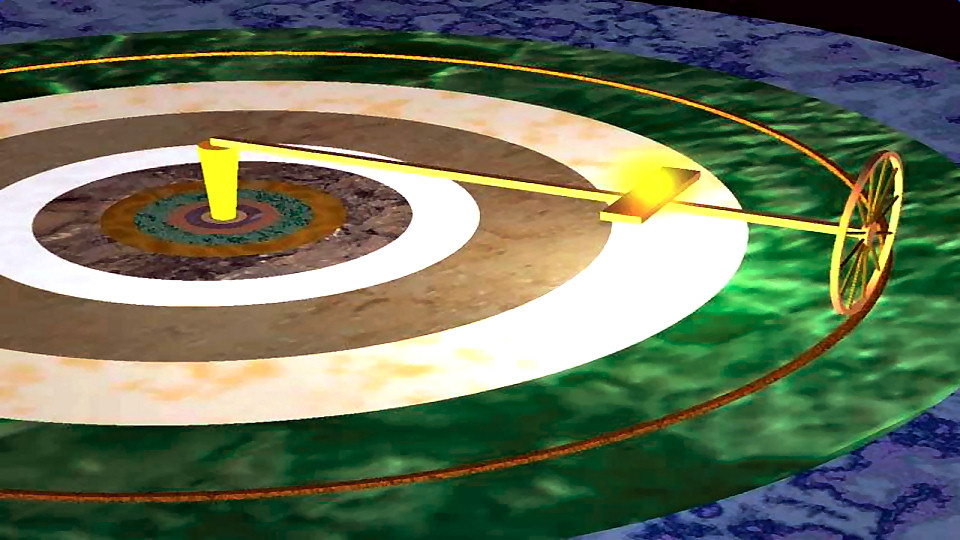
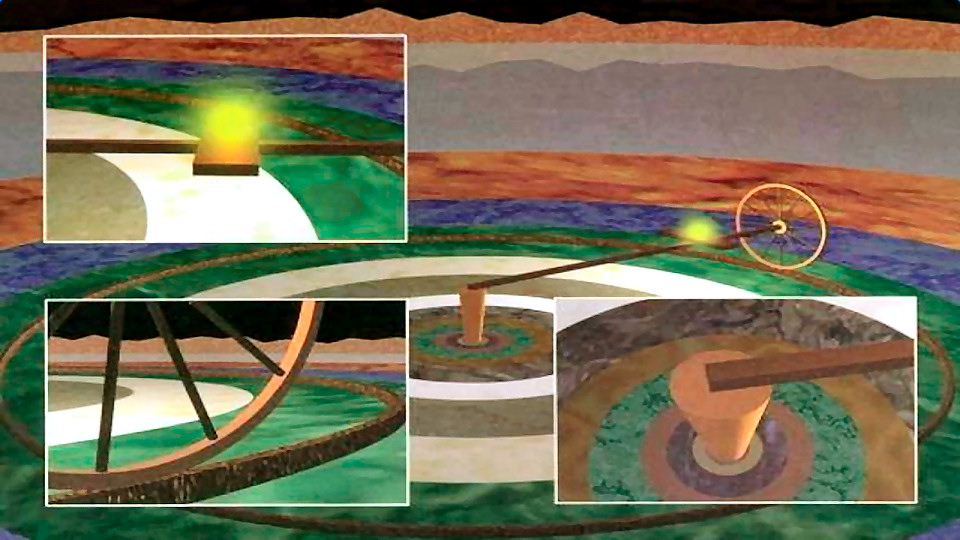
Affixed to the outer end of the axle, the wheel continuously rotates
on Mānasottara Mountain like the wheel of an oil-pressing machine
As in an oil-pressing machine, this first axle is attached to a second axle, which is one-fourth as long [3,937,500 yojanas, or 31,500,000 miles]. The upper end of this second axle is attached to Dhruvaloka by a rope of wind. Like bulls yoked to a central pivot, all the planetary systems revolve around Dhruvaloka, impelled by eternal time. [SB/5/21/14]
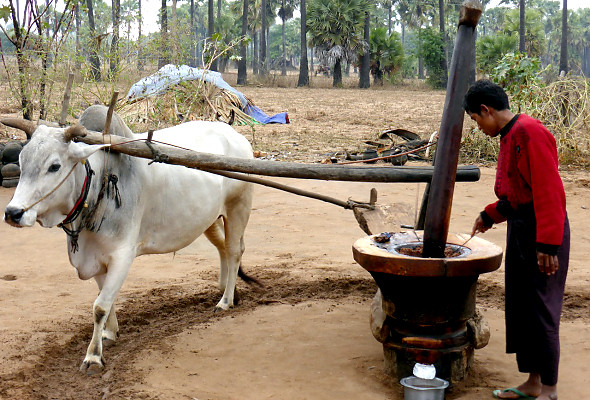
My dear King, the carriage of the sun-god’s chariot is estimated to be 3,600,000 yojanas [28,800,000 miles] long and one-fourth as wide [900,000 yojanas, or 7,200,000 miles]. The chariot’s horses, which are named after Gāyatrī and other Vedic meters, are harnessed by Aruṇadeva to a yoke that is also 900,000 yojanas wide. This chariot continuously carries the sun-god.
The seven horses yoked to the sun-god’s chariot are named Gāyatrī, Bṛhati, Uṣṇik, Jagatī, Triṣṭup, Anuṣṭup and Paṅkti. These names of various Vedic meters designate the seven horses that carry the sun-god’s chariot. (SB/5/21/15)
The Orbits of the Planets
According to the movements of the moon and other planets, all the inhabitants of the universe are prone to auspicious and inauspicious situations. This is referred to as the influence of the stars.
Residing in outer space, which is in the middle of the universe, between Bhuloka and Bhuvarloka, the sun rotates through the time circle of the zodiac, represented by twelve rasis,or signs, and assumes different names according to the sign he is in. For the moon, every month is divided into two fortnights. Similarly, according to solar calculations, a month is equal to the time the sun spends in one constellation; two months constitute one season, and there are twelve months in a year. The entire area of the sky is divided into two halves, each representing an ayana, the course traversed by the sun within a period of six months. The sun travels sometimes slowly, sometimes swiftly and sometimes at a moderate speed. In this way it travels within the three worlds, consisting of the heavenly planets, the earthly planets and outer space.
King Pariksit inquired from Sukadeva Gosvami: My dear lord, you have already affirmed the truth that the supremely powerful sun-god travels around Dhruvaloka with both Dhruvaloka and Mount Sumeru on his right. Yet at the same time the sun-god faces the signs of the zodiac and keeps Sumeru and Dhruvaloka on his left. How can we reasonably accept that the sun-god proceeds with Sumeru and Dhruvaloka on both his left and right simultaneously? (SB 5.22.1)
Śrī Sukadeva Gosvami clearly answered: When a potter’s wheel is moving and small ants located on that big wheel are moving with it, one can see that their motion is different from that of the wheel because they appear sometimes on one part of the wheel and sometimes on another. Similarly, the signs and constellations, with Sumeru and Dhruvaloka on their right, move with the wheel of time, and the antlike sun and other planets move with them. The sun and planets, however, are seen in different signs and constellations at different times. This indicates that their motion is different from that of the zodiac and the wheel of time itself. (SB 5.22.2)
When the moon is waxing, the illuminating portions of it increase daily, thus creating day for the demigods and night for the pitas. When the moon is waning, however, it causes night for the demigods and day for the pitas. In this way the moon passes through each constellation of stars in thirty muhurtas [an entire day]. The moon is the source of nectarean coolness that influences the growth of food grains, and therefore the moon-god is considered the life of all living entities. He is consequently called Jiva, the chief living being within the universe. (SB 5.22.9)
The moon is situated 100,000 yojanas above the rays of the sunshine. Day and night on the heavenly planets and Pitrloka are calculated according to its waning and waxing. Above the moon by a distance of 200,000 yojanas are many stars, and above these stars is Sukra-graha (Venus), whose influence is always auspicious for the inhabitants of the entire universe. Above Sukra-graha by 200,000 yojanas is Budha-graha (Mercury), whose influence is sometimes auspicious and sometimes inauspicious. Next, above Budha-graha by 200,000 yojanas, is Angaraka (Mars), which almost always has an unfavorable influence. Above Angaraka by another 200,000 yojanas is the planet called Brhaspati-graha (Jupiter), which is always very favorable for qualified brahmanas. Above Brhaspati-graha is the planet Sanaiscara (Saturn), which is very inauspicious, and above Saturn is a group of seven stars occupied by great saintly persons who are always thinking of the welfare of the entire universe. These seven stars circumambulate Dhruvaloka, which is the residence of Lord Visnu within this universe.
Situated 1,100,000 yojanas above Saturn, or 2,600,000 yojanas above earth, are the seven saintly sages, who are always thinking of the well-being of the inhabitants of the universe. They circumambulate the supreme abode of Lord Visnu, known as Dhruvaloka, the polestar. (SB 5.22.17)
The Śiśumāra Planetary System
All the planetary systems take shelter of the polestar, Dhruvaloka. It also describes the totality of these planetary systems to be Śiśumāra, another expansion of the external body of the Supreme Personality of Godhead. Dhruvaloka, the abode of Lord Viṣṇu within this universe, is situated 1,300,000 yojanasfrom the seven stars. In the planetary system of Dhruvaloka are the planets of the fire-god, Indra, Prajāpati, Kaśyapa and Dharma, all of whom are very respectful to the great devotee Dhruva, who lives on the polestar.
Like bulls yoked to a central pivot, all the planetary systems revolve around Dhruvaloka, impelled by eternal time. Those who worship the virāṭ-puruṣa, the universal form of the Lord, conceive of this entire rotating system of planets as an animal known as śiśumāra. This imaginary śiśumāra is another form of the Lord.
The head of the śiśumāra form is downward, and its body appears like that of a coiled snake. On the end of its tail is Dhruvaloka, on the body of the tail are Prajāpati, Agni, Indra and Dharma, and on the root of the tail are Dhātā and Vidhātā. On its waist are the seven great sages.
The entire body of the śiśumāra faces toward its right and appears like a coil of stars. On the right side of this coil are the fourteen prominent stars from Abhijit to Punarvasu, and on the left side are the fourteen prominent stars from Puṣyā to Uttarāṣāḍhā. The stars known as Punarvasu and Puṣyā are on the right and left hips of the śiśumāra, and the stars known as Ārdrā and Aśleṣā are on the right and left feet of the śiśumāra. Other stars are also fixed on different sides of the Śiśumāra planetary system according to the calculations of Vedic astronomers. To concentrate their minds, yogīs worship the Śiśumāra planetary system, which is technically known as the kuṇḍalini-cakra.
When bulls are yoked together and tied to a central post to thresh rice, they tread around that pivot without deviating from their proper positions—one bull being closest to the post, another in the middle, and a third on the outside. Similarly, all the planets and all the hundreds and thousands of stars revolve around the polestar, the planet of Mahārāja Dhruva, in their respective orbits, some higher and some lower. Fastened by the Supreme Personality of Godhead to the machine of material nature according to the results of their fruitive acts, they are driven around the polestar by the wind and will continue to be so until the end of creation.
These planets float in the air within the vast sky, just as clouds with hundreds of tons of water float in the air or as the great śyena eagles, due to the results of past activities, fly high in the sky and have no chance of falling to the ground. (SB/5/23/3)
Dhruvaloka, the abode of Lord Viṣṇu within this universe, is situated 1,300,000 yojanasfrom the seven stars. In the planetary system of Dhruvaloka are the planets of the fire-god, Indra, Prajāpati, Kaśyapa and Dharma, all of whom are very respectful to the great devotee Dhruva, who lives on the polestar. Like bulls yoked to a central pivot, all the planetary systems revolve around Dhruvaloka, impelled by eternal time. Those who worship the virāṭ-puruṣa, the universal form of the Lord, conceive of this entire rotating system of planets as an animal known as śiśumāra.
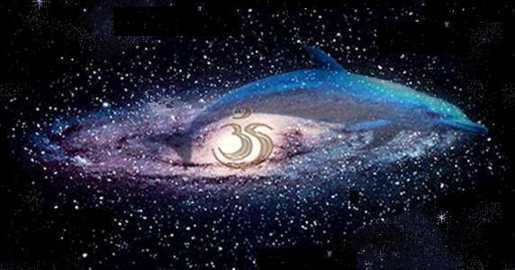
This great machine, consisting of the stars and planets, resembles the form of a śiśumāra [dolphin] in the water. It is sometimes considered an incarnation of Kṛṣṇa, Vāsudeva. Great yogīs meditate upon Vāsudeva in this form because it is actually visible. [SB/5/23/4]
This form of the śiśumāra has its head downward and its body coiled. On the end of its tail is the planet of Dhruva, on the body of its tail are the planets of the demigods Prajāpati, Agni, Indra and Dharma, and at the base of its tail are the planets of the demigods Dhātā and Vidhātā. Where the hips might be on the śiśumāra are the seven saintly sages like Vasiṣṭha and Aṅgirā. The coiled body of the Śiśumāra-cakra turns toward its right side, on which the fourteen constellations from Abhijit to Punarvasu are located. On its left side are the fourteen stars from Puṣyā to Uttarāṣāḍhā. Thus its body is balanced because its sides are occupied by an equal number of stars. On the back of the śiśumāra is the group of stars known as Ajavīthī, and on its abdomen is the Ganges that flows in the sky [the Milky Way]. [SB/5/23/5]
On the right and left sides of where the loins might be on the Śiśumāra-cakra are the stars named Punarvasu and Puṣyā. Ārdrā and Aśleṣā are on its right and left feet, Abhijit and Uttarāṣāḍhā are on its right and left nostrils, Śravaṇā and Pūrvāṣāḍhā are at its right and left eyes, and Dhaniṣṭhā and Mūlā are on its right and left ears. The eight stars from Maghā to Anurādhā, which mark the southern course, are on the ribs of the left of its body, and the eight stars from Mṛgaśīrṣā to Pūrvabhādra, which mark the northern course, are on the ribs on the right side. Śatabhiṣā and Jyeṣṭhā are on the right and left shoulders. [SB/5/23/6]
On the upper chin of the śiśumāra is Agasti; on its lower chin, Yamarāja; on its mouth, Mars; on its genitals, Saturn; on the back of its neck, Jupiter; on its chest, the sun; and within the core of its heart, Nārāyaṇa. Within its mind is the moon; on its navel, Venus; and on its breasts, the Aśvinī-kumāras. Within its life air, which is known as prāṇāpāna, is Mercury, on its neck is Rāhu, all over its body are comets, and in its pores are the numerous stars. [SB/5/23/7]
Viśvanātha Cakravartī Ṭhākura estimates that Dhruvaloka, the polestar, is 3,800,000 yojanas above the sun. Above Dhruvaloka by 10,000,000 yojanas is Maharloka, above Maharloka by 20,000,000 yojanas is Janaloka, above Janaloka by 80,000,000 yojanas is Tapoloka, and above Tapoloka by 120,000,000 yojanas is Satyaloka. Thus the distance from the sun to Satyaloka is 233,800,000 yojanas, or 1,870,400,000 miles. The Vaikuṇṭha planets begin 26,200,000 yojanas(209,600,000 miles) above Satyaloka. Thus the Viṣṇu Purāṇa describes that the covering of the universe is 260,000,000 yojanas (2,080,000,000 miles) away from the sun. The distance from the sun to the earth is lower planetary systems called Atala, Vitala, Sutala, Talātala, Mahātala, Rasātala and Pātāla. Below these lower planets by 30,000 yojanas, Śeṣa Nāga is lying on the Garbhodaka Ocean. That ocean is 249,800,000 yojanas deep. Thus the total diameter of the universe is approximately 500,000,000 yojanas, or 4,000,000,000 miles.
Does the Earth Float in Space?
